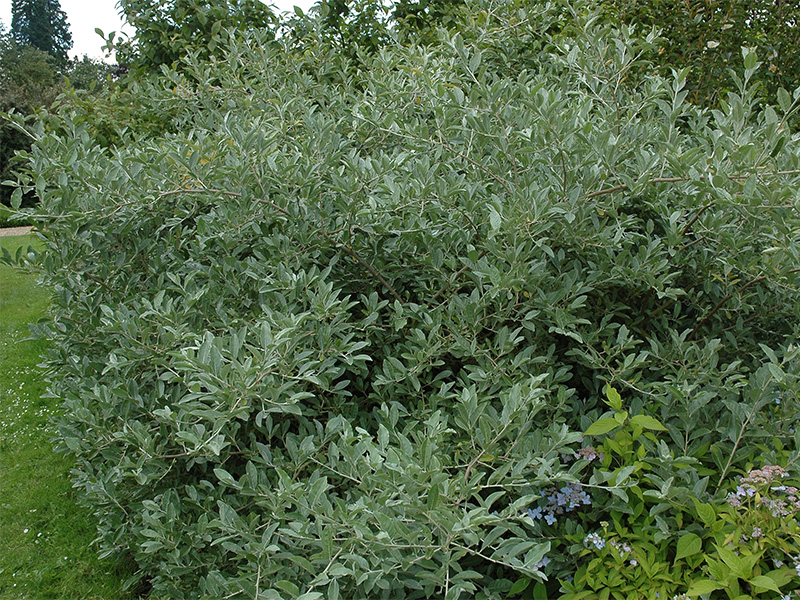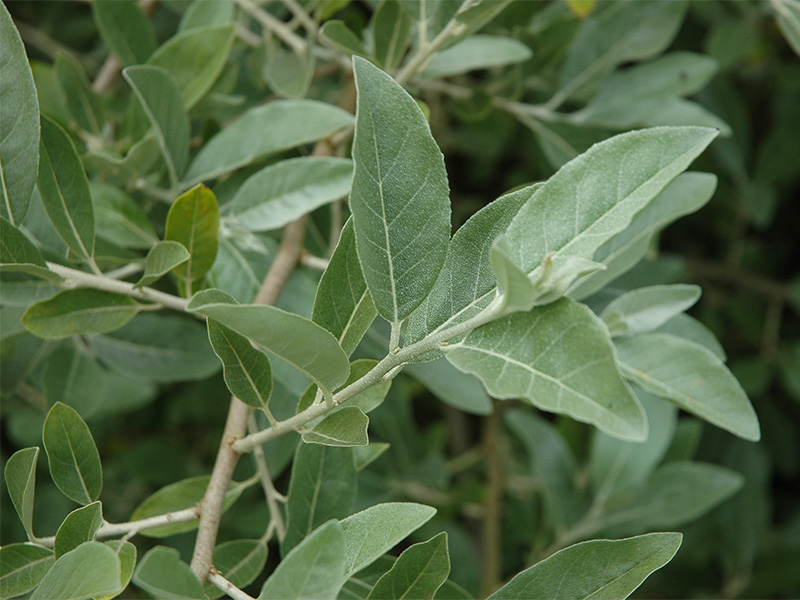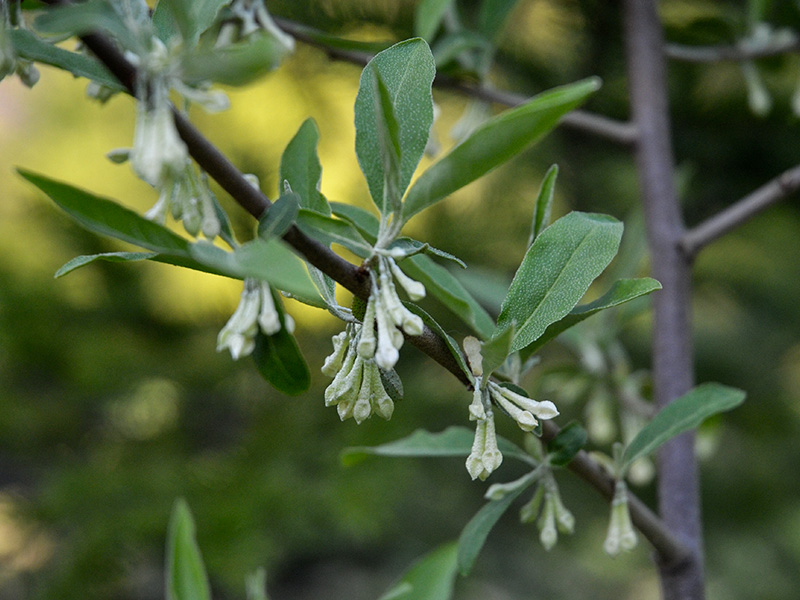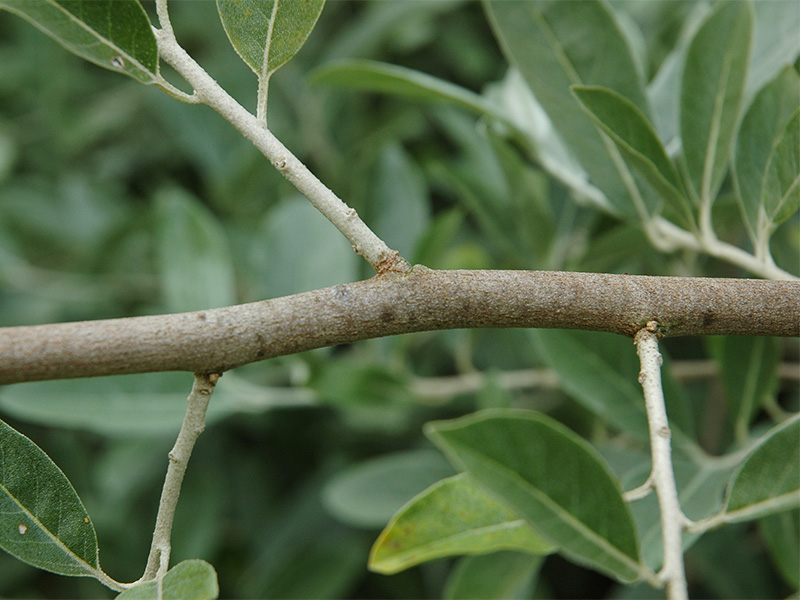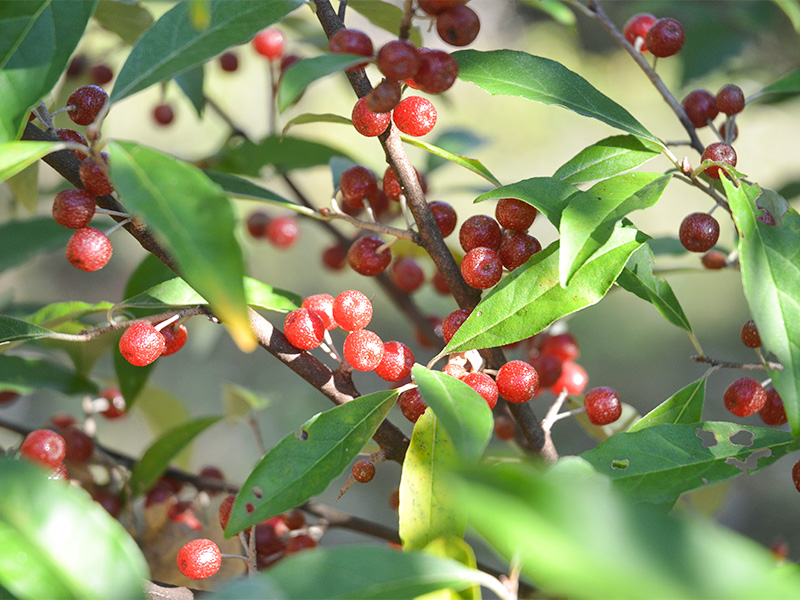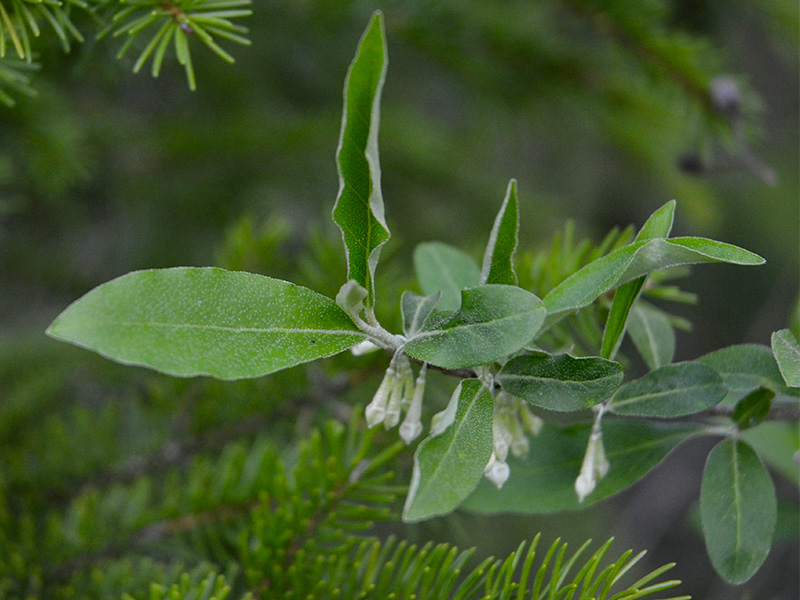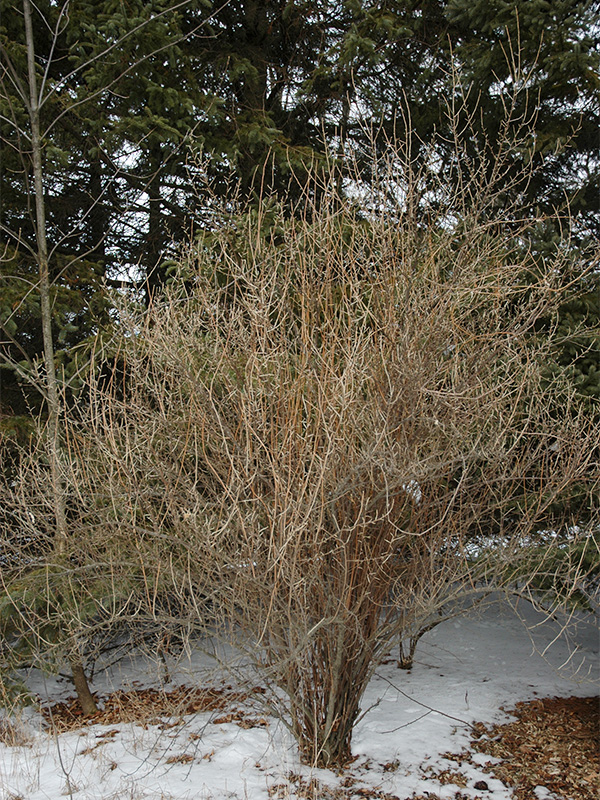| Shape | Large, dense and sprawling. |
| Landscape | Hedge and border planting. |
| Cultivation | Full sun and partial-shade. Moist and well-drained soils. Drought and erosion tolerant. |
| Pests | Leaf spots, cankers, rust, verticillium wilt and crown gall. |
| Notable Specimens | Joany's Woods, West Williams, Middlesex County, Ontario, Canada. |
| Bark/Stem Description | Woody stems/trunks that rise from the base with the largest trunk maturing to 15 cm in diameter. The trunk/branches have sharp thorns. Arching branches that dip to the ground. The bark on older trunks peel in long. thin and narrow strips. |
| Leaf Description | Speckled and thorny stems. Elliptic leaves that are 5 - 8 cm long with entire but often wavy margins. Scales appearing on the underside.
|
| Flower Description | Fragrant, funnel-shaped, 4-petaled flowers. 8 mm long and bloom in clusters (1 - 4 umbels) dropping from the leaf axils. |
| Fruit Description | Fleshy, abundant and scale-dotted fruit.
|
| Colour Description | Stems are silvery-golden-brown in colour. The leaves are a greyish-green with distinct silver scales. The flowers are a silvery-white to dull yellow colour. The fruit ripens to a speckled red colour. |
| Texture Description | The leaves appear leathery. |
